Construction Green

What is green building and why is it important for the construction industry ?
Green building is an approach to design, construction, operation, and maintenance of buildings that aims to minimize environmental impact and resource consumption throughout a building's lifecycle. It focuses on sustainability, energy efficiency, water conservation, materials selection, and indoor environmental quality. The importance of green building in the construction industry stems from environmental concerns, economic benefits, and social responsibility. Green buildings reduce carbon footprint, conserve resources, preserve biodiversity, save energy costs, have higher asset values, and promote healthier living conditions. They also set community standards for sustainable practices and help companies stay ahead of compliance requirements. Green building drives innovation in materials science, design techniques, and construction technology. Overall, green building represents a fundamental shift towards more sustainable and responsible practices within the construction industry.
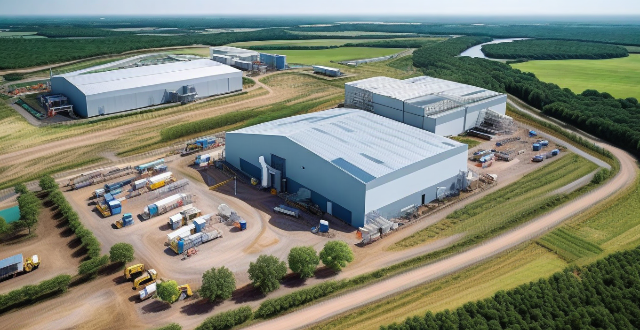
How do building energy efficiency standards affect the construction industry ?
Building energy efficiency standards have a significant impact on the construction industry by affecting cost implications, design philosophy, regulatory compliance, and market trends. These standards require higher initial costs due to advanced technologies and materials but offer long-term benefits like reduced energy consumption and maintenance costs. They also shift the focus of design towards energy performance and sustainability, leading to integrated design processes and innovative solutions. Compliance with these standards is crucial to avoid penalties and legal issues, while certifications like LEED or WELL can provide a competitive advantage. Finally, building energy efficiency standards influence market trends by driving demand for sustainable construction methods and educating clients about their benefits.

How do weather conditions affect building safety during construction ?
The text discusses the impact of various weather conditions on building safety during construction. It highlights the risks associated with extreme heat, cold weather, rain and water, strong winds, snow and ice, and lightning and thunderstorms. The conclusion emphasizes the importance of monitoring weather forecasts and adjusting working procedures to ensure worker safety.
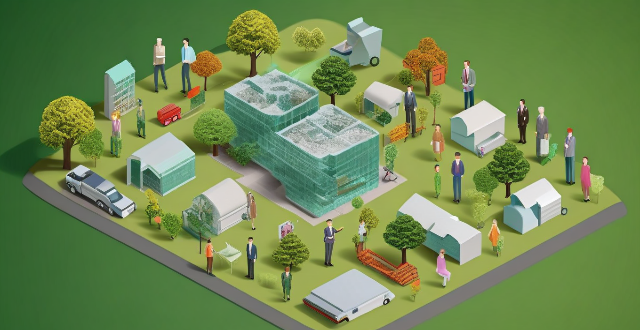
What industries offer the most green job opportunities ?
Green jobs are positions that help to preserve or improve the environment. As society becomes more aware of environmental issues and the need for sustainable development, green jobs are becoming increasingly popular. The industries offering the most green job opportunities include renewable energy, environmental science and conservation, sustainable agriculture, waste management and recycling, and green building and construction. Jobs in these sectors range from engineers and technicians to researchers and educators.
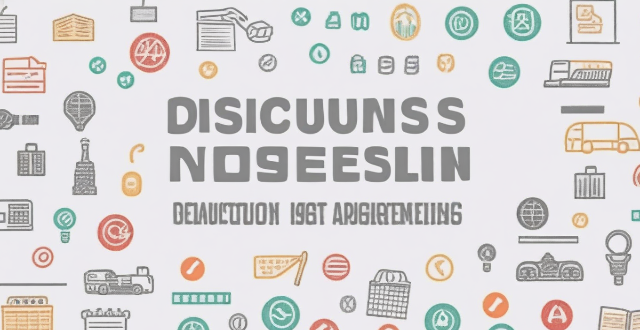
How does poor project management contribute to construction hazards ?
This text discusses the impact of poor project management on construction hazards, including inadequate planning, communication breakdown, ineffective risk management, unrealistic timelines and budgets, and inadequate supervision and training. It emphasizes the importance of effective project management practices for ensuring safety and success in construction projects.

How often should safety inspections be conducted on a construction site ?
Safety inspections are crucial for construction sites to prevent accidents and ensure worker well-being. The frequency of these inspections depends on the project's size, complexity, type of work, and local regulations. This guide provides a detailed overview of how often safety inspections should be conducted: 1. Daily Inspections: Include visual checks, tools and equipment, and personal protective equipment (PPE). 2. Weekly Inspections: Cover structural integrity, electrical systems, and fire safety. 3. Monthly Inspections: Assess environmental hazards, emergency response plans, and site cleanliness. 4. Quarterly Inspections: Conduct comprehensive site assessments, review training updates, and ensure regulatory compliance. Unannounced spot checks should also be performed throughout the project to maintain safety awareness among workers. Safety should always be a top priority on any construction site, and regular inspections are essential for achieving this goal.

How can we improve safety measures in the construction industry ?
Improving safety measures in the construction industry is crucial for protecting workers and ensuring project completion without delays. A comprehensive approach to enhancing safety includes implementing rigorous training programs, developing comprehensive safety policies, enforcing the use of personal protective equipment (PPE), conducting regular inspections and maintenance, promoting a safety culture, utilizing modern technology, improving housekeeping and orderliness, conducting risk assessments, adopting best practices, and partnering with safety organizations. By prioritizing safety measures, the construction industry can significantly reduce accidents and create a secure environment for all stakeholders involved.
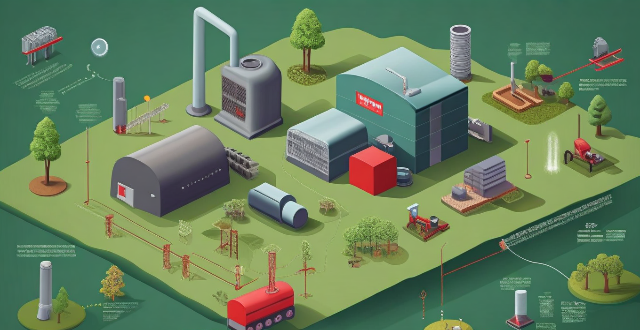
How does green technology help the environment ?
Green technology, or clean technology, includes various techniques and products designed to reduce environmental harm. Its benefits include reducing greenhouse gas emissions, conserving natural resources, protecting ecosystems, reducing waste, and promoting sustainable practices. These technologies help minimize pollution, save energy, preserve water, maintain biodiversity, and encourage recycling and responsible waste management. As green technology advances, its positive impact on the environment is expected to increase.
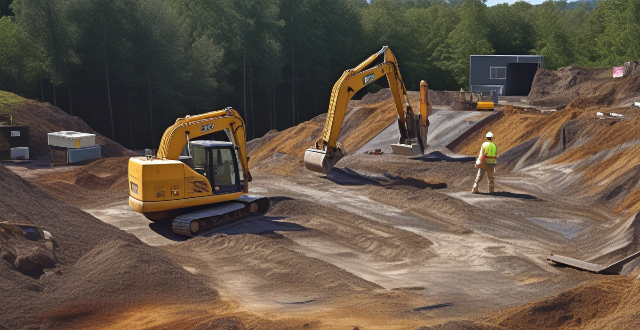
Why is it important to have regular safety training for construction workers ?
Construction sites are dangerous places with numerous potential hazards. Regular safety training for construction workers is essential to mitigate these risks. It enhances awareness of potential hazards, promotes a culture of safety, and ensures compliance with regulations and standards. Ongoing education and training helps workers identify new hazards, develop preventive measures, build a shared responsibility for safety, reinforce safe work habits, meet legal requirements, and maintain insurance coverage. By investing in regular safety training, construction companies can create safer work environments, protect their employees, and avoid costly fines and legal liabilities.

What are the benefits of green jobs ?
Green jobs, also known as sustainable jobs or eco-friendly employment, refer to positions that contribute positively to the environment and help in mitigating climate change. These jobs are often focused on renewable energy, energy efficiency, pollution control, waste management, and environmental conservation. The benefits of green jobs are multifaceted and can be categorized into economic, environmental, and social dimensions. In summary, green jobs offer a triple win by stimulating economic growth, protecting the environment, and enhancing social well-being. As societies continue to prioritize sustainability, the importance of these jobs will only increase, making them a cornerstone of future employment landscapes.

What is the role of personal protective equipment (PPE) in ensuring construction site safety ?
The article discusses the crucial role of Personal Protective Equipment (PPE) in ensuring safety on construction sites. It emphasizes the importance of PPE in protecting workers from physical, chemical, biological, and environmental hazards. The article also highlights the legal implications of not using PPE, as well as its potential to enhance worker productivity. Furthermore, it outlines various types of PPE used on construction sites, such as head protection, eye and face protection, hearing protection, hand protection, foot protection, respiratory protection, and fall protection. The article also provides best practices for using PPE effectively, including proper fit and comfort, maintenance and replacement, training and awareness, and storage and accessibility. Finally, the article concludes that PPE is an essential component of any construction project's health and safety protocols.
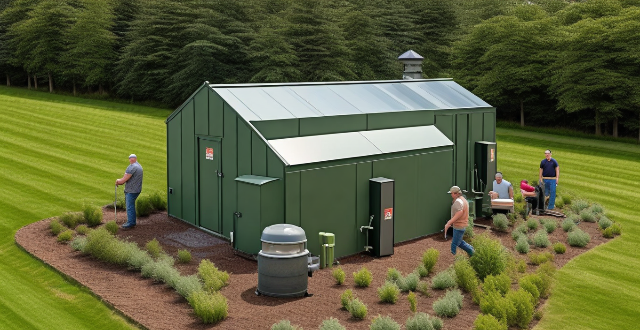
Can green bonds help fight climate change effectively ?
Green bonds, a type of fixed-income instrument, are issued to fund environmentally friendly projects that aim to reduce greenhouse gas emissions and promote sustainable development. They can effectively contribute to the fight against climate change by incentivizing renewable energy projects, supporting energy efficiency and conservation, investing in low-carbon infrastructure, promoting sustainable agriculture and forestry, and advancing research and development. However, challenges such as ensuring transparency and accountability, achieving scale and impact, integrating with broader climate strategies, and engaging diverse investors must be addressed to fully realize their potential. As the market for green bonds grows, they remain an important tool in combating climate change effectively.

What role do banks play in promoting green finance ?
Banks promote green finance by offering loans for sustainable projects, investing in eco-friendly companies, and introducing green products. They also educate customers on sustainability and collaborate with governments and NGOs to support green initiatives.
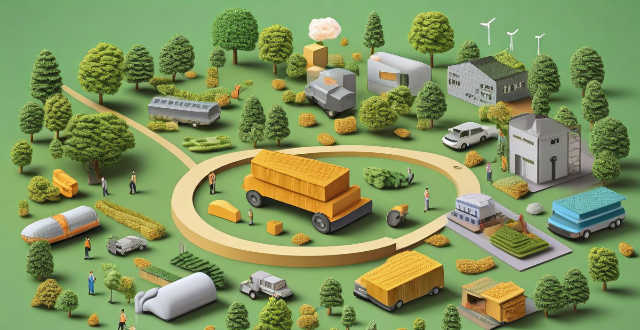
What role do green bonds and other financial products play in climate financing ?
Green bonds and other financial products are crucial for climate financing, enabling investors to support environmentally friendly projects. These instruments fund renewable energy, energy efficiency, waste management, biodiversity conservation, and other eco-friendly initiatives, contributing to climate change mitigation and sustainable development. Key features of green bonds include transparency and verification, offering benefits such as attracting capital and pricing advantages but facing challenges like standardization and secondary market liquidity. Other financial products include climate-themed investment funds, CERs, green loans, and credit facilities, which directly finance green projects and stimulate innovation in sustainable practices. By aligning financial returns with environmental benefits, these instruments play a vital role in mobilizing private capital towards climate action, helping to bridge the funding gap for sustainable projects and mitigate climate change.

How does green finance contribute to sustainable development ?
Green finance plays a pivotal role in driving sustainable development by channeling financial resources towards environmentally friendly projects and initiatives. Here's a detailed look at how it contributes: 1. Promoting Renewable Energy 2. Supporting Green Infrastructure 3. Advancing Clean Technology 4. Influencing Corporate Behavior 5. Regulating Financial Markets 6. Educating Investors and the Public
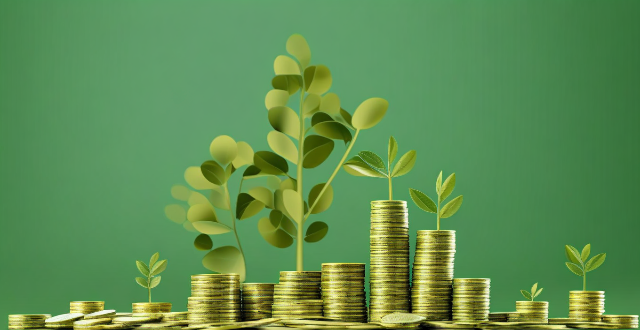
What is green finance ?
Green finance is the use of financial instruments and strategies to support environmentally friendly projects. It includes sustainable investing, green bonds, green banks, carbon credits, impact investing, climate-related disclosures, ESG criteria, green indexes, green funds, green insurance, green tax incentives, green microfinance, green real estate, green technology, and green partnerships. The goal of green finance is to promote economic growth while minimizing negative impacts on the environment.

How can we promote the use of green technology ?
Green technology is essential for mitigating climate change and ensuring a sustainable future. To promote its use, strategies include education campaigns, integrating sustainability into school curricula, offering financial incentives and tax breaks, implementing regulations, funding research and development, encouraging corporate responsibility, supporting community projects, showcasing successes, participating in global agreements, promoting eco-labeling, and encouraging green marketing. These efforts can drive innovation, create jobs, and foster economic development sustainably.

What is the future outlook for green jobs ?
The future outlook for green jobs is promising, asThe future outlook for green jobs is promising, as eco-friendly practices continues to The key factors driving this growth include government policies, consumer demand, technological advancements, corporate social responsibility, and international collaboration. Examples of green jobs include renewable energy technicians, sustainability managers, green building designers, waste management professionals, conservation scientists, and environmental lawyers.

What role does government play in promoting green technology ?
The government plays a crucial role in promoting green technology. This is because the government has the power to create policies and regulations that can encourage the adoption of sustainable practices and technologies. Here are some ways in which the government can promote green technology: 1. Funding and Incentives 2. Regulations and Standards 3. Public Awareness Campaigns 4. Collaboration with Industry
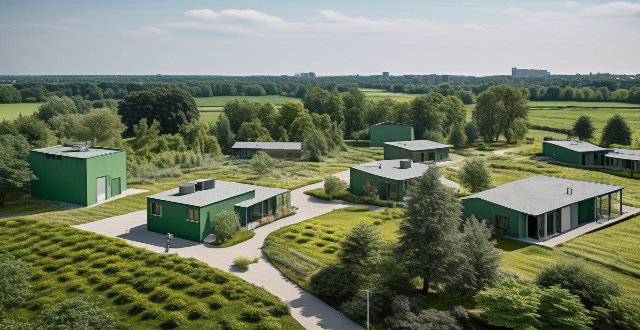
What are the economic benefits associated with urban green spaces ?
Urban green spaces provide economic benefits to cities, including increased property values, reduced air pollution, and enhanced tourism. These spaces improve the living environment, leading to higher home and rental prices, increased tax revenue, and healthcare cost savings. Additionally, they attract tourists, boosting the local economy through job creation and multiplier effects. Investing in urban green spaces is beneficial for both the environment and city prosperity.
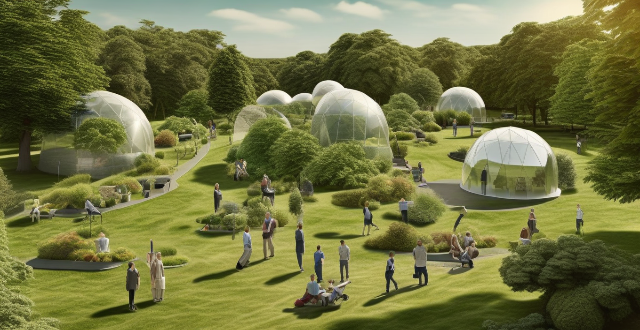
How can an understanding of environmental psychology aid in the design of green spaces that enhance mental health ?
The text discusses the importance of environmental psychology in designing green spaces that enhance mental health. It highlights key principles such as biophilia, perceptions of safety, social interaction, cognitive restoration, and sensory experiences. The article suggests incorporating natural elements, defined areas, communal facilities, quiet zones, and multisensory features to create green spaces that promote relaxation, community building, cognitive engagement, and overall well-being.

What role do urban green spaces play in climate adaptation strategies ?
Urban green spaces play a crucial role in climate adaptation strategies by providing cooling effects, carbon sequestration, flood control, and habitat preservation. To effectively incorporate these spaces into climate adaptation efforts, city planners should conduct assessments, develop comprehensive plans, collaborate with local communities, monitor and evaluate projects, and educate residents about the benefits of green spaces.

What role do governments play in promoting the use of green bonds ?
Governments play a crucial role in promoting the use of green bonds by providing incentives for issuance, establishing regulations and disclosure requirements, issuing their own green bonds, and promoting education and awareness campaigns. These actions help accelerate the transition to a more sustainable economy and address pressing environmental challenges facing our planet.

What are the benefits of using green packaging ?
Using green packaging has become increasingly popular in recent years as people have become more aware of the environmental impact of traditional packaging materials. Green packaging refers to eco-friendly and sustainable packaging solutions that are designed to reduce waste, conserve resources, and minimize pollution. Here are some of the benefits of using green packaging: Reduced Environmental Impact: - Lower Carbon Footprint: Green packaging materials often require less energy to produce than traditional materials, resulting in a lower carbon footprint. - Biodegradable and Recyclable: Many green packaging options are made from biodegradable or recyclable materials, reducing the amount of waste that ends up in landfills. - Reduced Pollution: Green packaging helps to reduce pollution by minimizing the use of harmful chemicals and toxins in the production process. Cost Savings: - Long-Term Cost Efficiency: While green packaging may initially be more expensive than traditional options, it can lead to long-term cost savings due to reduced waste disposal costs and increased efficiency in production processes. - Tax Incentives and Grants: Many governments offer tax incentives and grants for businesses that implement eco-friendly practices, including the use of green packaging. Improved Brand Image: - Enhanced Corporate Social Responsibility (CSR): Using green packaging demonstrates a commitment to sustainability and social responsibility, which can enhance a company's reputation and appeal to environmentally conscious consumers. - Increased Customer Loyalty: Consumers who value eco-friendly practices are likely to choose products with green packaging over those with traditional packaging, leading to increased customer loyalty and sales. Innovation and Creativity: - Stimulates Innovation: The need for sustainable packaging solutions encourages companies to invest in research and development, leading to innovative new products and processes. - Design Flexibility: Green packaging materials can often be molded into unique shapes and sizes, allowing for greater creativity in product design. Health Benefits: - Reduced Exposure to Harmful Chemicals: Green packaging materials are often free from harmful chemicals and toxins, reducing the risk of exposure for both consumers and workers involved in the production process. - Improved Food Safety: Eco-friendly packaging materials can help maintain food quality and safety by preventing contamination and extending shelf life.

How can investors identify credible green bond opportunities ?
Investing in green bonds is becoming increasingly popular as more investors seek to align their portfolios with environmental sustainability goals. However, it is crucial for investors to identify credible green bond opportunities to ensure that their investments truly contribute to positive environmental impacts. Here are some key steps and considerations for identifying credible green bond opportunities: 1. Understand the definition of green bonds. 2. Look for certification and verification. 3. Examine the use of proceeds. 4. Assess the environmental impact. 5. Check transparency and reporting. 6. Consider the credit quality. 7. Review the legal framework. 8. Consult professional advice.

What are some challenges faced by green technology ?
Green technology, or environmentally friendly and sustainable technology, faces several challenges that hinder its widespread adoption. These include high initial investment and maintenance costs, limited access to resources such as rare raw materials and energy infrastructure changes, technological limitations in performance and compatibility, regulatory challenges including lack of uniform standards and bureaucratic hurdles, market barriers like consumer awareness and competition from established technologies, social and cultural factors such as resistance to change and education/training limitations, and potential environmental trade-offs and resource depletion concerns. Addressing these issues through policy initiatives, research and development, education programs, and public awareness campaigns is crucial for the successful integration of green technology into society.

What are the requirements for obtaining a Green Card in the USA ?
The process of obtaining a Green Card in the USA involves meeting specific eligibility criteria, completing necessary forms and submitting supporting documents, attending an interview, undergoing a medical examination, passing a background check, and receiving the card in the mail. To maintain permanent resident status, one must live in the U.S. for at least half of each year, file taxes annually, renew their Green Card every 10 years, and avoid committing certain criminal offenses.
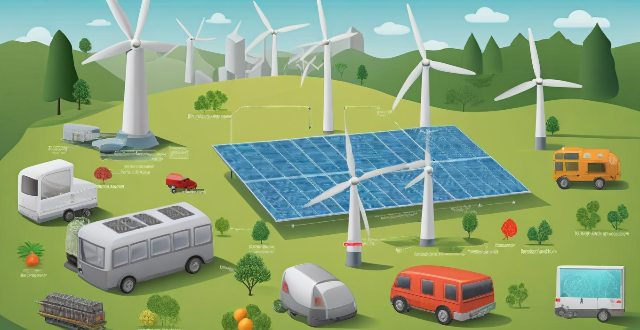
How can green technology reduce carbon emissions ?
In this article, we explore how green technology can help in reducing carbon emissions. We discuss renewable energy sources such as solar, wind, hydro, geothermal, and biomass energy, which produce little to no greenhouse gas emissions during operation. We also emphasize the importance of improving energy efficiency and conservation, utilizing carbon capture and storage technologies, and promoting electric vehicles. By implementing these green technologies, we can significantly reduce our carbon footprint and create a more sustainable future for generations to come.

What innovative materials and technologies are being used in modern construction to address climate challenges ?
Innovative materials and technologies in modern construction are being used to address climate challenges. These include green building materials, energy-efficient technologies, water efficiency solutions, and waste management strategies. Recycled materials, eco-friendly insulation, low-emission coatings, solar power systems, smart building management, high-performance glass, rainwater harvesting systems, water-saving fixtures, on-site recycling centers, and waste-to-energy technologies are among the key solutions being adopted. These advancements aim to reduce the environmental impact of buildings, improve energy efficiency, and enhance sustainability.